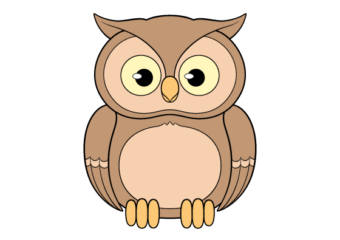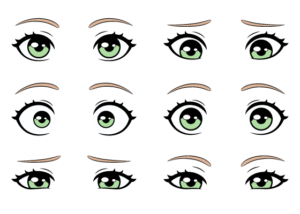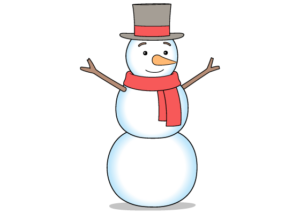8 Examples of How to Draw Eye Expressions
This tutorial shows how to draw eight different eye expressions in a cartoon style with eight drawing steps for each emotion.
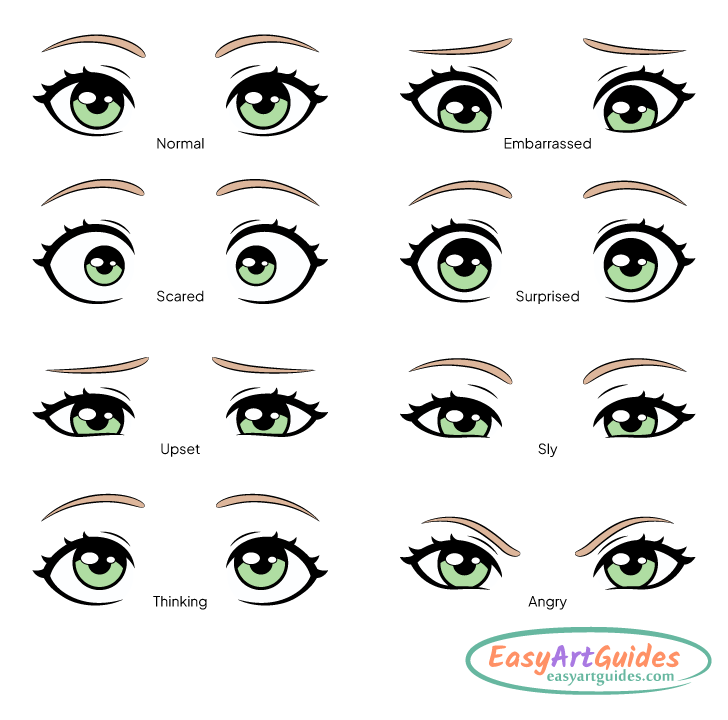
Because this guide covers several common eye expression at once it’s quite long. While you don’t need to go through every one of them it is recommended that you read the instruction for drawing the first pair of eyes (normal eye expression) before looking at the others. The reason for this is that the normal expression is the one that all of the other eye expressions are based on. For example, when the instructions are to draw the eyes wider or make the irises smaller it means in relation to their normal state. The other examples have fewer instruction/explanations to avoid repetition.
Please note that the lines in all of the examples shown in this tutorial have been made dark so that they are easy for you to see. You should however start the drawing in pencil and make lights lines (unless drawing digitally) that can be easily erased in case you need to make a correction. You can darken them once you have all parts of whatever eye expression you are drawing outlined. For this particular guide an easy way to do so is by using a thin black marker to trace over your lines and to fill in the dark areas of the eyes. If you don’t have a marker you can also do it using a regular pencil.
How to Draw a Normal Eye Expression Step by Step
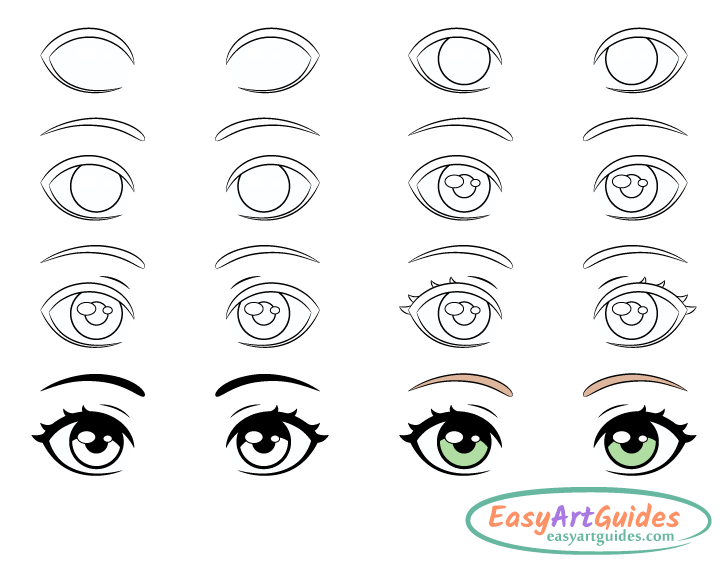
This first example is of the eyes in their normal/relaxed state. As already mentioned, when the instructions for the other expressions say to draw the eyes wider, narrower, etc… That means in relation to these.
Step 1 – Draw the Outlines of the Eyes
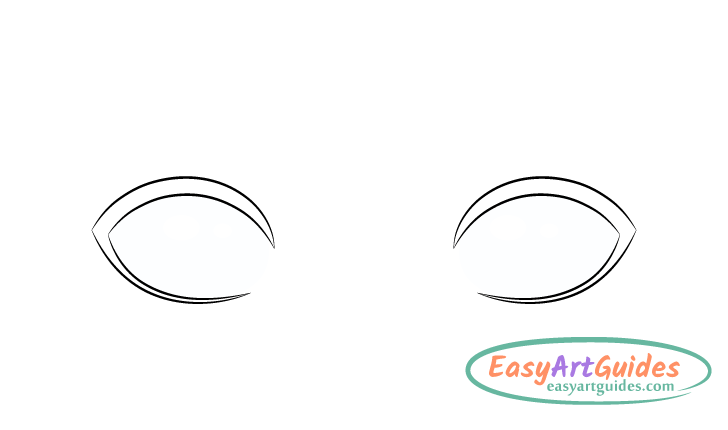
Begin the drawing with an outline of the outer shapes of the eyes. As these are stylized/cartoon eyes make them much wider and larger than you would if you were drawing a more realistic pair. Leave the inner ends of the outlines open and draw them angled slightly downwards.
Inside the main outlines draw another pair of similar shapes to define the eyelashes (some hints of individual lashes will be added in a later step). Make the eyelashes thinner near the inner corners of the eyes and thicker at their outer corners.
Step 2 – Draw the Irises
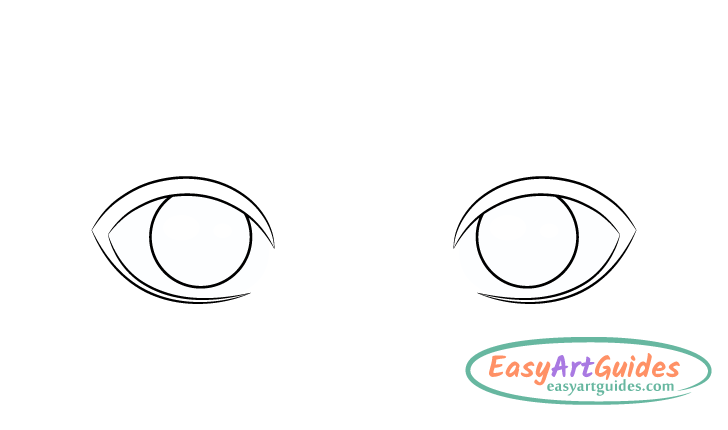
Inside the outlines of the eyelashes draw the irises. Make them round and position them so that they are slightly covered by the upper eyelids while leaving some space between them and the lower eyelids.
Step 3 – Draw the Eyebrows
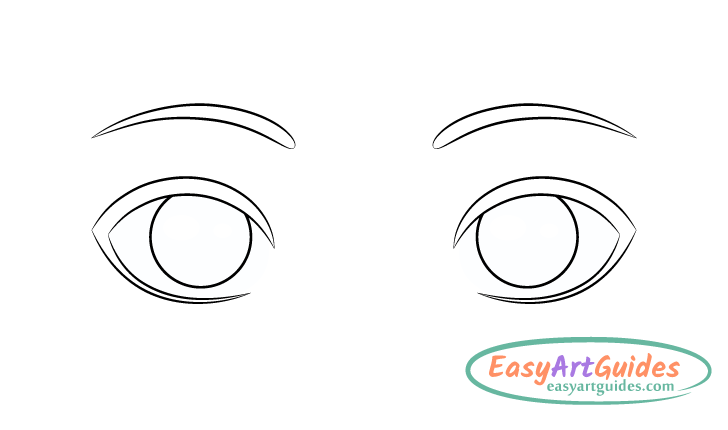
Above the eyes add the eyebrows. Draw the overall shape of each of these to be a smooth curve. Make the eyebrows thicker near their inner ends and thinner towards their outer ends. Similar to the eyes you can also angle them slightly downwards so that the inner ends are lower down than the outer ends.
Step 4 – Draw the Pupils
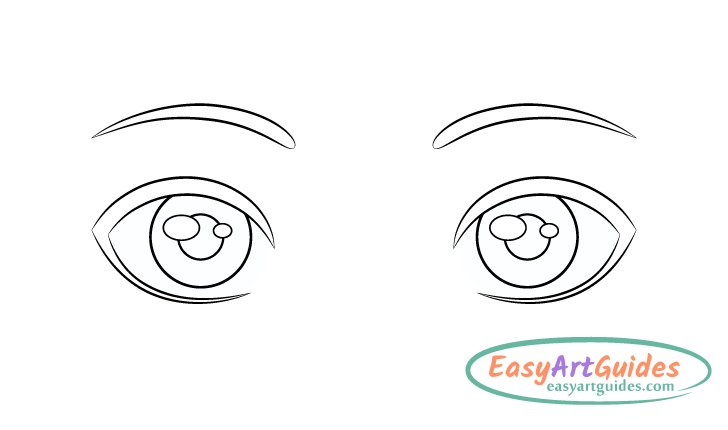
Inside each eye draw the pupils overlapped by the reflections (light reflecting from the eyes).
Position the pupils directly in the center of the irises and make them round in shape.
When drawing the reflections you can either add them first or draw them over top of the pupils and erase the parts where they overlap.
Reflections generally take on the shape of the light source but for cartoon eyes you can keep things simple and just draw them as a pair of ovals inside each eye. Add a larger one higher up for the main light source and the smaller one lower down on the opposite side of each pupil to show reflected light. If for example the main reflection is created by an overhead light the second one could be created by it reflecting from some smooth surface lower down.
Step 5 – Add the Eyelids
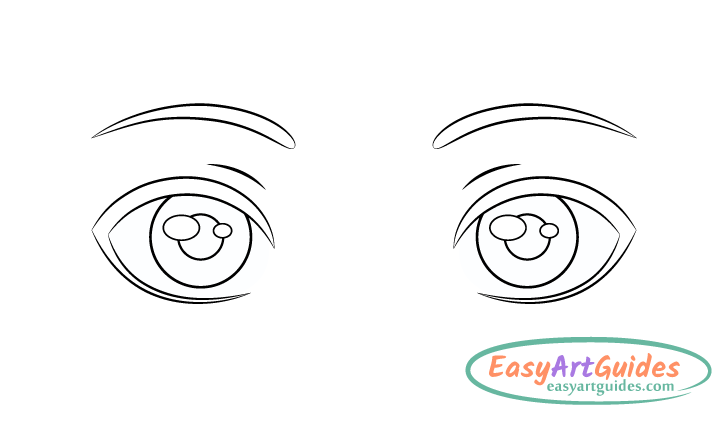
For this very simple step draw the upper ends of the eyelids. You can show these just by adding a pair of curves slightly above the inner ends of the eyes. Draw each curve to pretty much follow the shape of it’s respective eye.
Step 6 – Add Hints of Individual Lashes

Hint at some individual lashes by adding some near the outer upper ends of the eyes. As these are stylized cartoon eyelashes make the lashes fairly thick with pointy ends.
Step 7 – Add the Eyelids, Eyelashes and Shading

Once you’ve outlined all parts of the eyes trace over your drawing with darker lines. As was mentioned at the start of the tutorial, a good way to do this (if drawing on paper) is with a think black marker but you can also do it with the pencil.
After darkening your lines fill in the eyelashes, pupils and upper areas of the irises with black or dark pencil shading (be sure to leave the reflections white). Also, give the irises even thicker dark outlines.
Step 8 – Color the Eyes
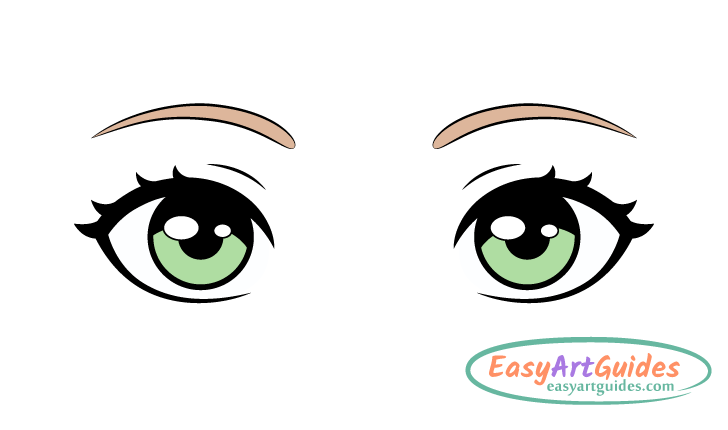
To finish the drawing simply fill in the pupils and the eyebrows with color. In this case the pupils are green and the eyebrow brown (green and brown go well together). You can of course use a different combination of colors if you prefer (blue and yellow for example). As these are cartoon eyes you can be quite creative and go with just about anything.
How to Draw an Embarrassed Eye Expression Step by Step

The eyes in this example can be used to show an embarrassed expression or a guilty look.
Step 1 – Draw the Outlines of the Eyes
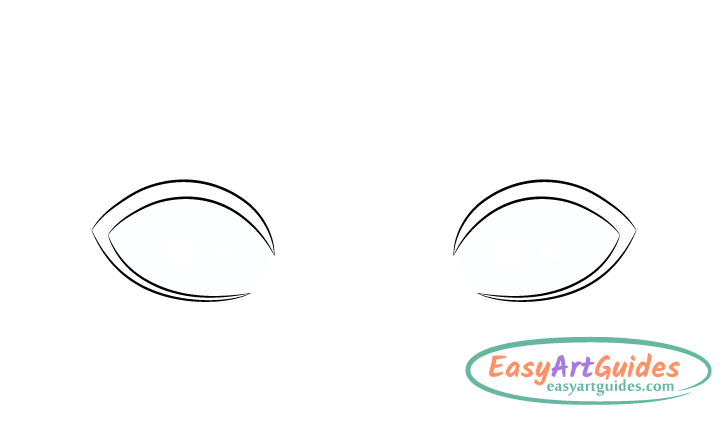
Draw embarrassed eyes slightly narrower than normal with the upper eyelids slightly lowered. to show this make the upper parts of their outlines a little bit flatter.
Usually the upper eyelids tend to lower when the eyes are looking down (as they are in this examples).
Step 2 – Draw the Irises
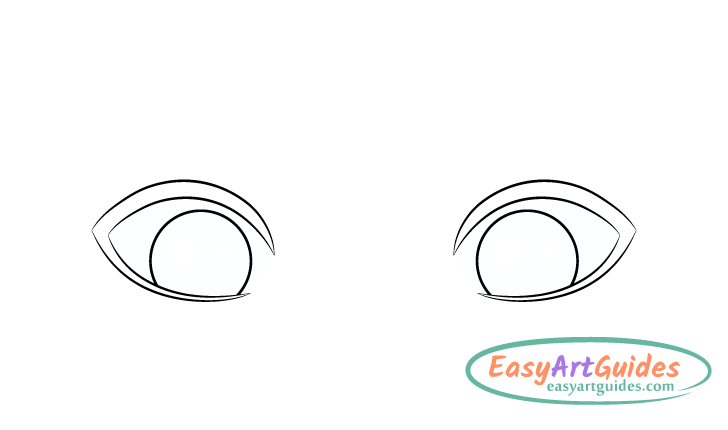
To show that the eyes are looking down position the irises much lower than you would for eyes that are looking straight ahead. Draw them partially covered by the bottom eyelids and leave a tiny bit of space between them and the upper eyelids.
Step 3 – Draw the Eyebrows
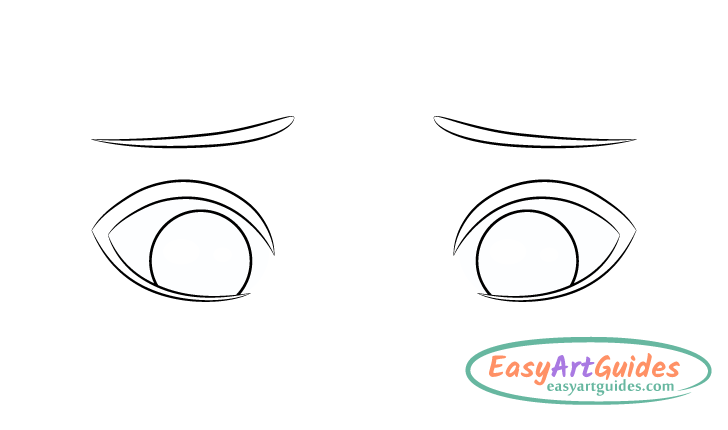
For an embarrassed expression draw the eyebrows in reverse of their normal curves with the inner ends lifted up.
Step 4 – Draw the Pupils
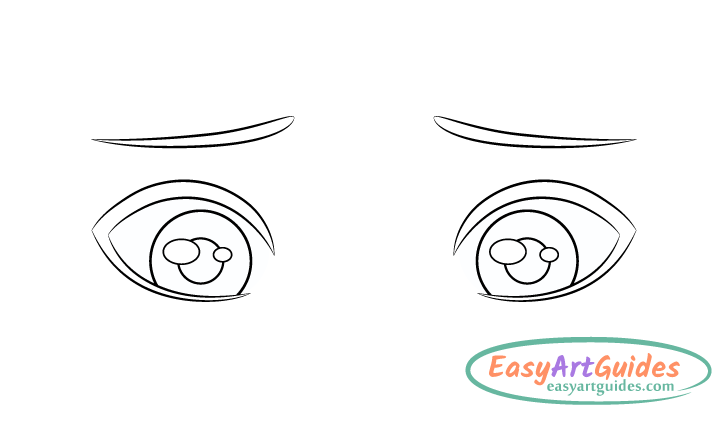
Draw the pupils at the center of the irises overlapped by the reflections. While the irises are shifted down the position of the pupils and reflections in relation to them does not need to be changed.
Step 5 – Add the Eyelids

Add hints of the upper ends of the eyelids above the inner ends of the eyes. Same as you would for a normal expression.
Step 6 – Add Hints of Individual Lashes
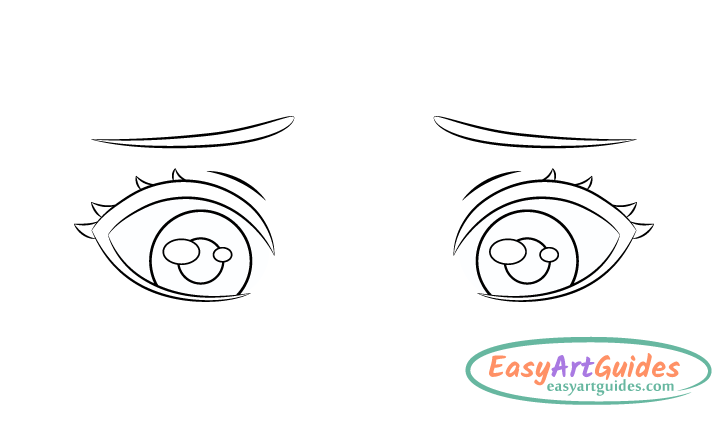
Add hints of individual lashes around the corners of the eyes (same as normal expression). Because in this case the eyes are narrower you can draw the lashes slightly closer together.
Step 7 – Add Shading

After you have all parts of the “sad eyes” outlined, trace over the drawing with a thin black marker or darker pencil lines. Next, fill in the eyelashes, pupils and upper parts of the irises with black or dark pencil shading. Afterwards, also give the irises even thicker outlines.
Step 8 – Color the Eyes
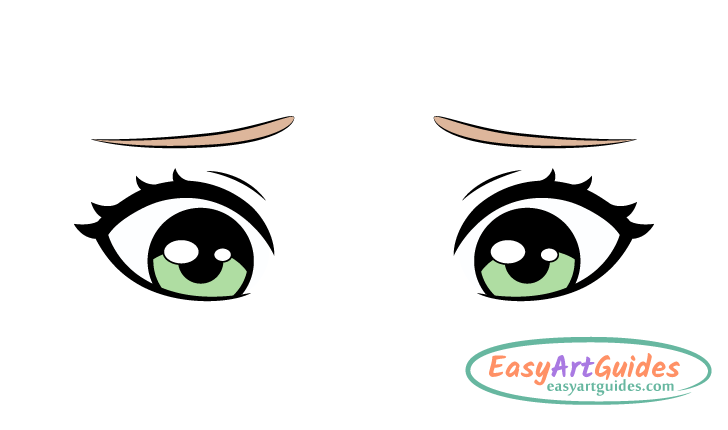
To finish the embarrassed eyes drawing fill in the eyebrows and irises with color.
How to Draw a Scared Eye Expression Step by Step
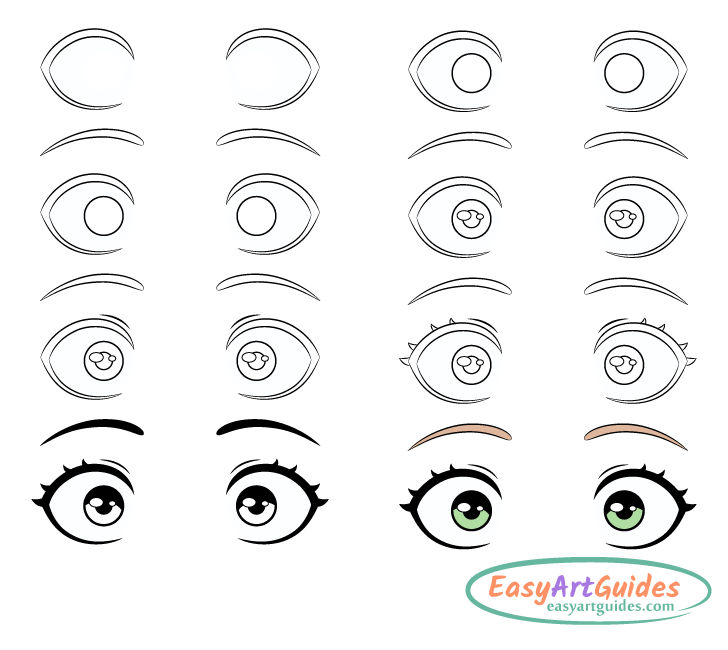
This example is of a scared or startled expression of the eyes.
Step 1 – Draw the Outlines of the Eyes
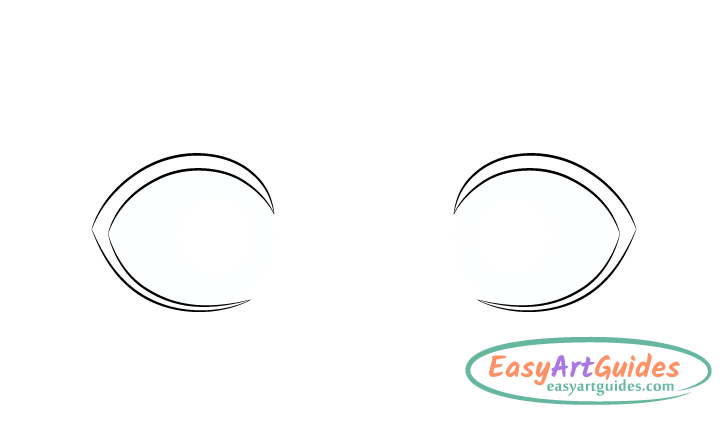
Draw “scared eyes” wide open with their upper eyelids raised and their bottom eyelids lowered. When done this should give them a much rounder overall shape compared to eyes in their regular state.
Step 2 – Draw the Irises

Draw the irises of scared eyes much smaller than normal. Also, position them fairly close to the inner ends of the eyes.
Although for real eyes the size of the irises does not change with the expression for cartoon eyes drawing them smaller can help emphasize a scared look.
Step 3 – Draw the Eyebrows

To further add to the scared look by drawing the eyebrows higher up than normal with their inner ends raised.
Step 4 – Draw the Pupils
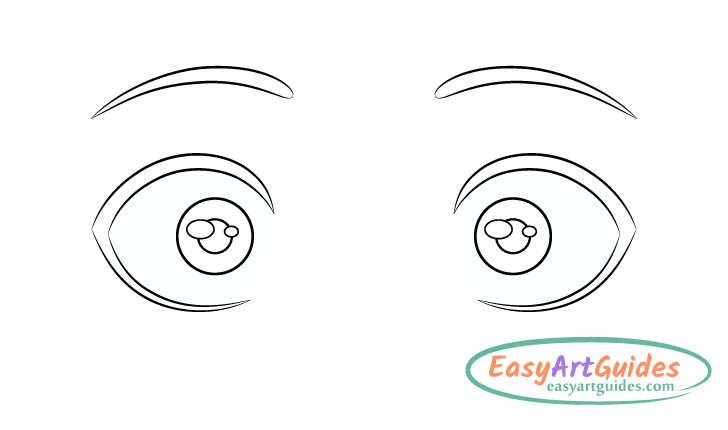
As the irises are drawn smaller make the pupils and reflections smaller as well but try and keep their size the same in relation to one another same as normal.
Step 5 – Add the Eyelids
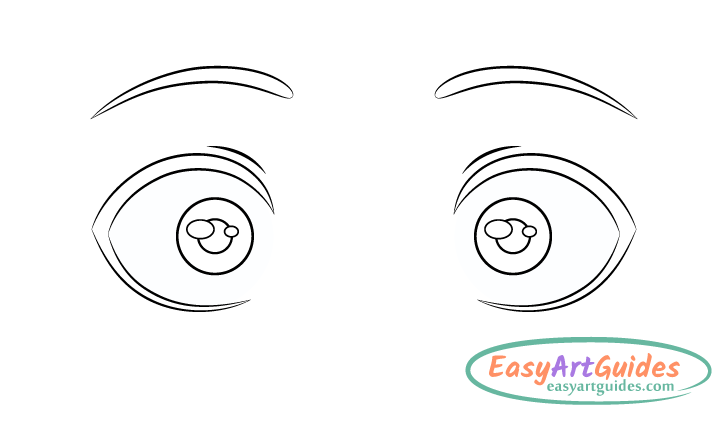
Because the eyes are wide open draw the lines that define the upper ends of the eyelids much closer to their outlines. Otherwise draw them same as normal with a pair of small curves nears the inner ends of the eyes.
Step 6 – Add Hints of Individual Lashes

Draw the lashes along the outer corners of each eye. You can space them slightly farther apart to show that the eyelids are stretched out.
Step 7 – Add Shading
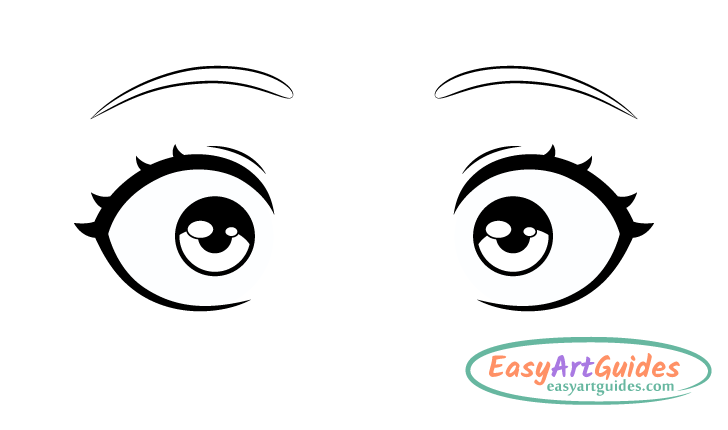
After outlining all parts of the “scared eyes”, darken your lines by tracing over them with a marker or a regular pencil. Fill in the eyelashes, pupils and upper ends of the irises with black (or dark pencil shading). Also, give the irises thicker outlines but make the lines slightly thinner than for a normal expression because of them being smaller.
Step 8 – Color the Eyes
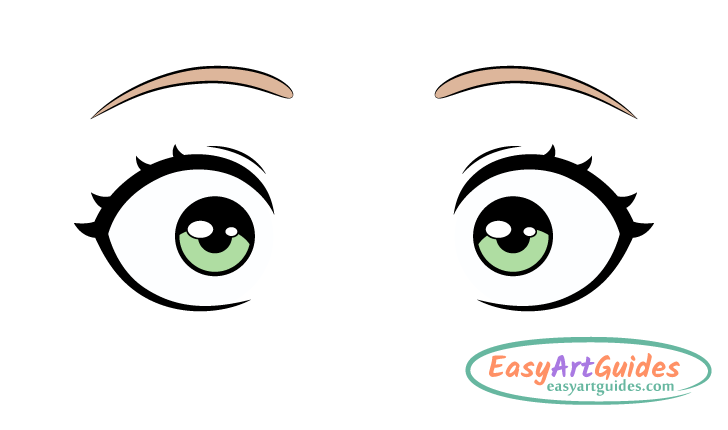
Finish the drawing by coloring the irises and eyebrows.
How to Draw a Surprised Eye Expression Step by Step
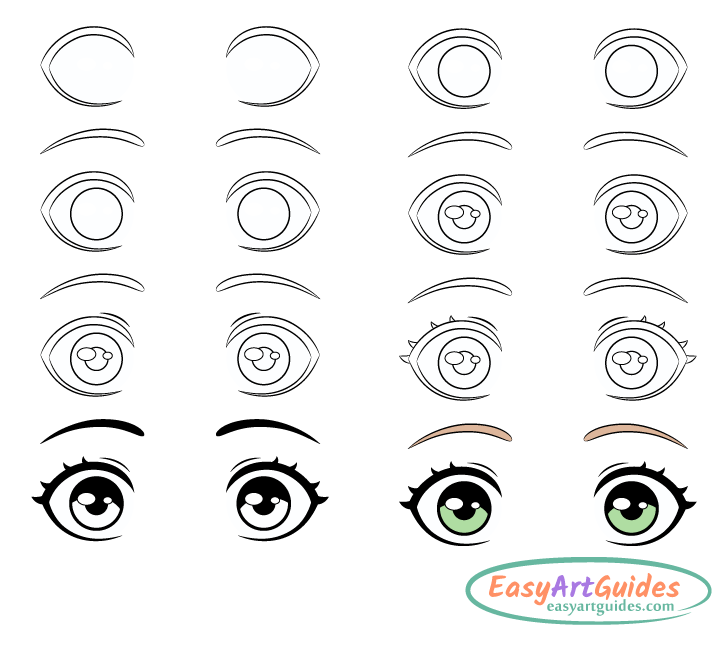
This example is of a surprised eye expression which is very similar to the scared one.
Step 1 – Draw the Outlines of the Eyes
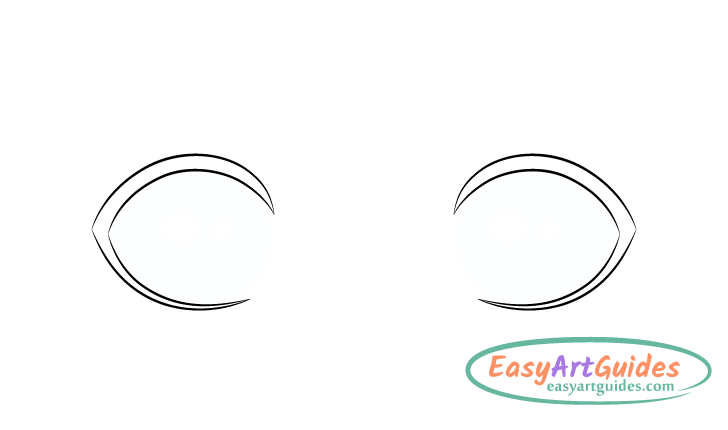
Just like for a scared expression draw the surprised eyes open much wider than normal with their upper eyelids raised and lower eyelids lowered.
Step 2 – Draw the Irises
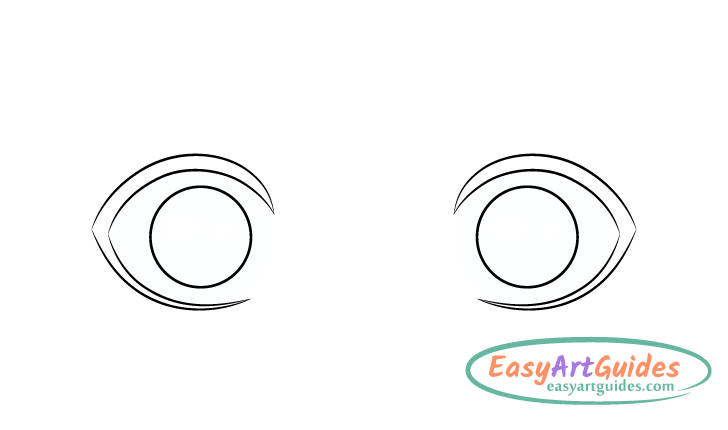
Unlike for a scared expression draw the irises the same size as you would for a normal expression. However, in this case they should be fully visible without being covered by the eyelids. Position them slightly closer to their upper eyelids.
Step 3 – Draw the Eyebrows
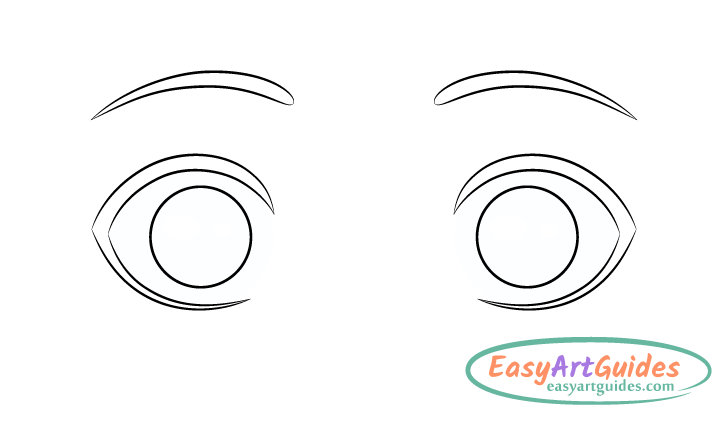
Again, similar to a scared expression draw the eyebrows for a surprised look higher up and with their inner ends raised.
Step 4 – Draw the Pupils
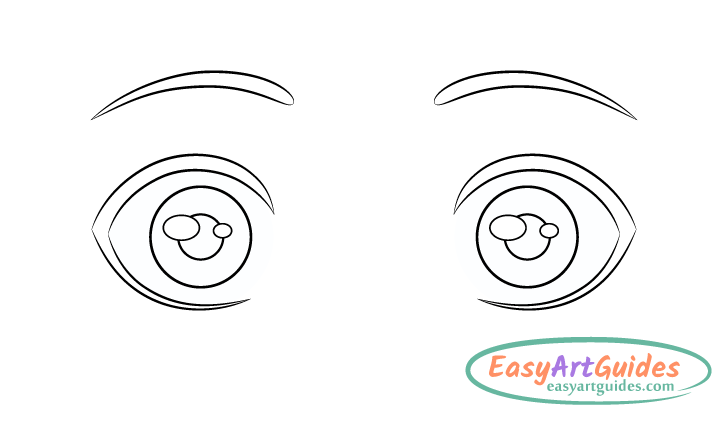
Inside each eye draw the pupil overlapped by a pair of reflections (same as you would for a normal expression).
Step 5 – Add the Eyelids
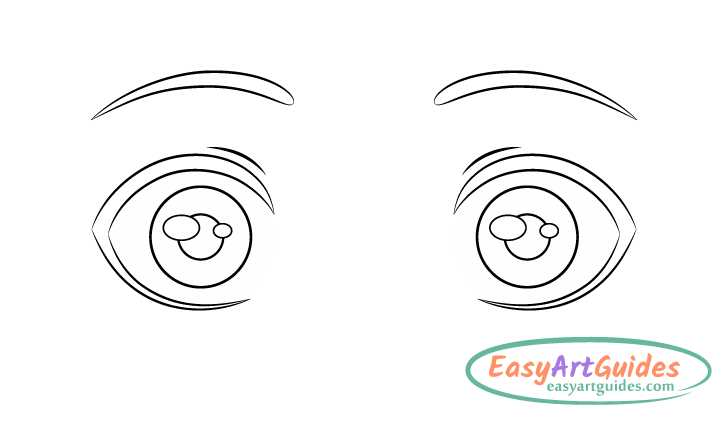
As the eyes are wide open the draw the lines that define the upper ends of the eyelids close to their main outlines (same as for the previous expression).
Step 6 – Add Hints of Individual Lashes
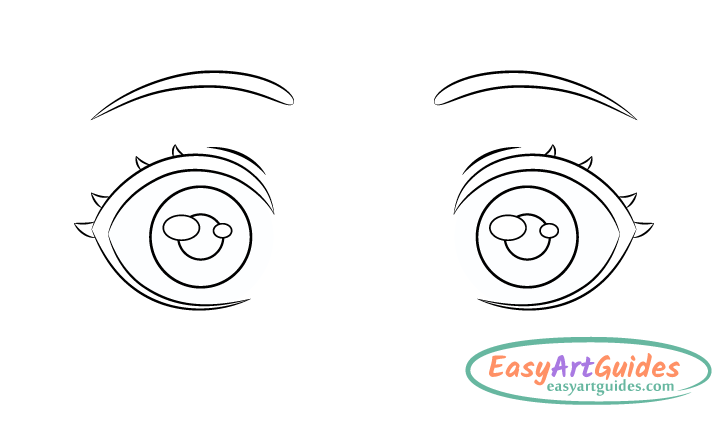
Again, same as in the previous example draw the lashes slightly farther apart than for a normal expression to show that the eyelids are stretched out.
Step 7 – Add Shading
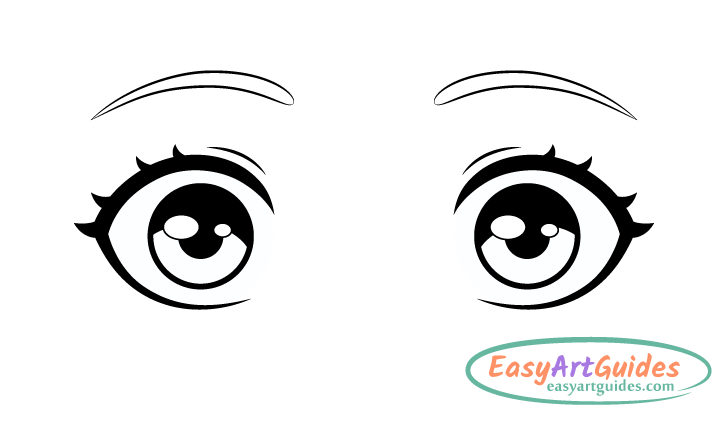
After drawing out all parts of the “surprised eyes”, trace over your drawing with darker pencil lines or a thin black marker. Afterwards, also use one or the other to fill in the eyelids, pupils and upper parts of the irises with black or dark pencil shading. Finally, give the irises thicker outlines to finish this stage of the drawing.
Step 8 – Color the Eyes
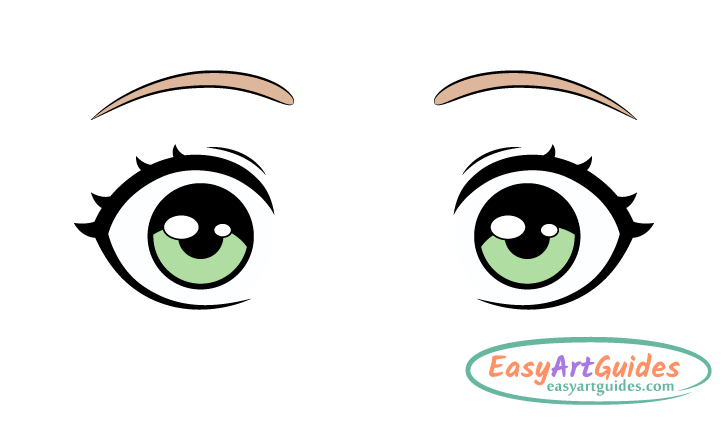
To color the eyes fill in the irises and eyebrows with whatever colors you choose.
How to Draw an Upset Eye Expression Step by Step
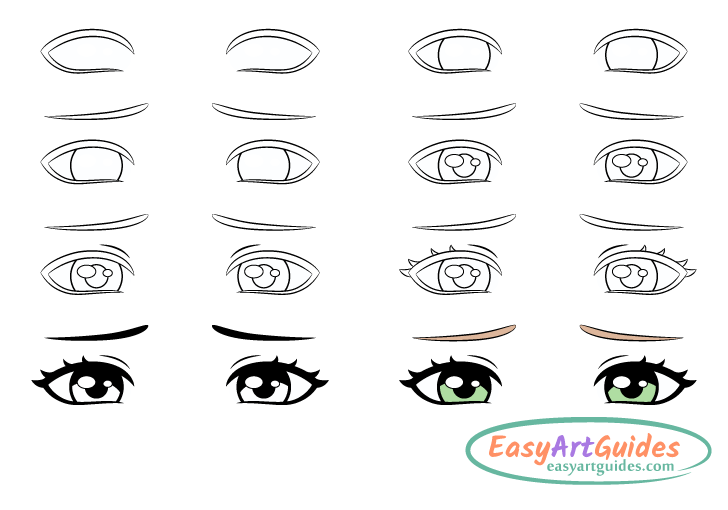
This example is of upset or sad eyes. This can be an expression a person makes when they are about to cry.
Step 1 – Draw the Outlines of the Eyes
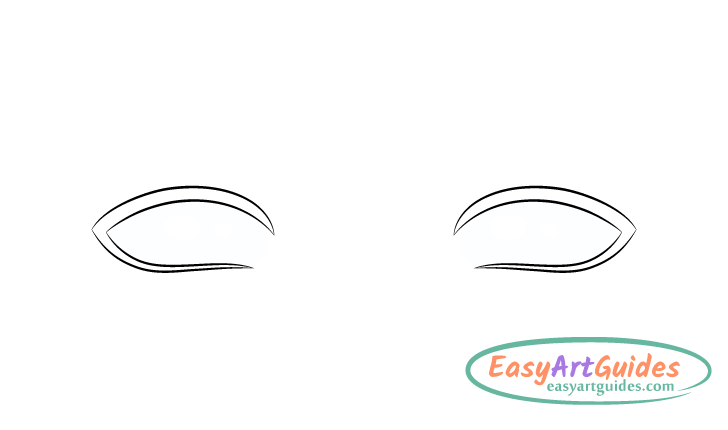
For a sad expression draw the eyes much narrower with much bigger gaps on the inner ends of their outlines as compared to normal. Also, draw the their shapes in a way where the inner ends are tilted upwards.
Step 2 – Draw the Irises
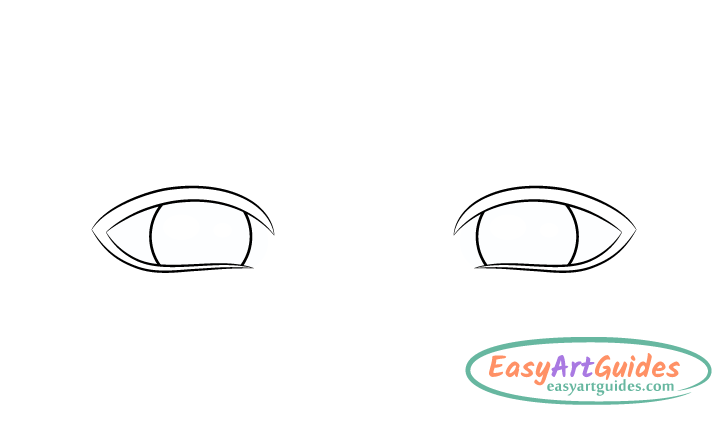
Draw the irises in a way where a large portions of both their upper and lower parts are covered by the eyelids (slightly more of the lower parts).
Step 3 – Draw the Eyebrows
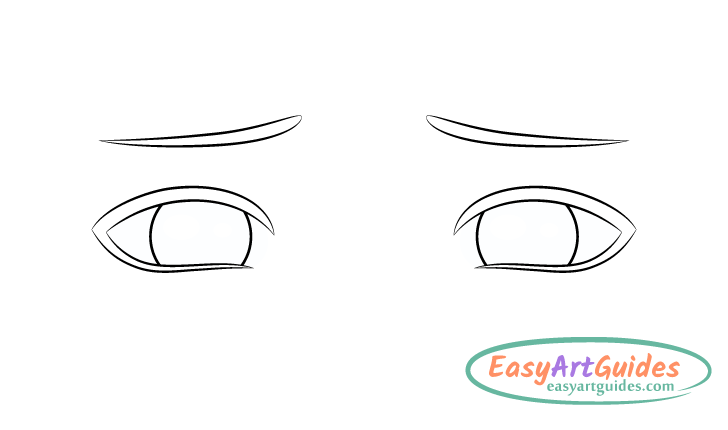
For a sad look draw eyebrows in reverse of their normal curves with the inner ends raised and slightly closer together than normal.
Step 4 – Draw the Pupils
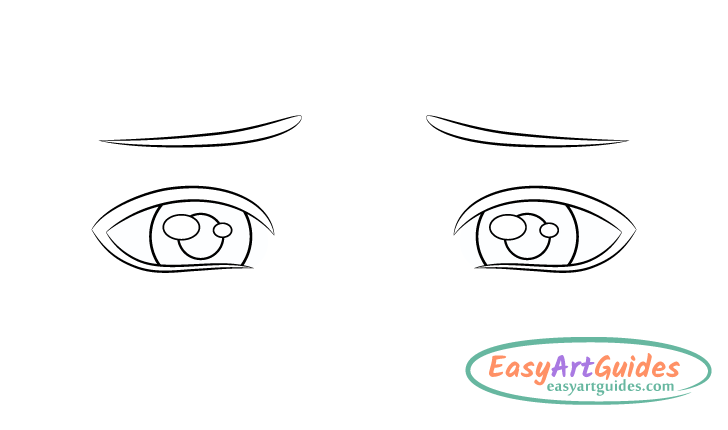
Inside the irises draw the pupils and reflections in the same was as for the normal expression.
Step 5 – Add the Eyelids

Because for this expression the eyes are narrowed there should be a bigger gap between them and the upper ends of the eyelids. Otherwise you can draw these in pretty much the same way as for the normal expression (as little curves above each eye).
Step 6 – Add Hints of Individual Lashes
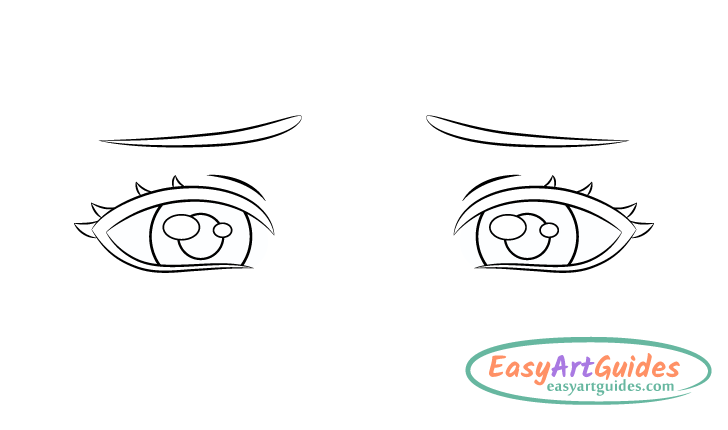
Add some individual lashes around the outer upper corners of each eye. Because the eyes are narrowed you can position the lashes slightly closer together.
Step 7 – Add Shading
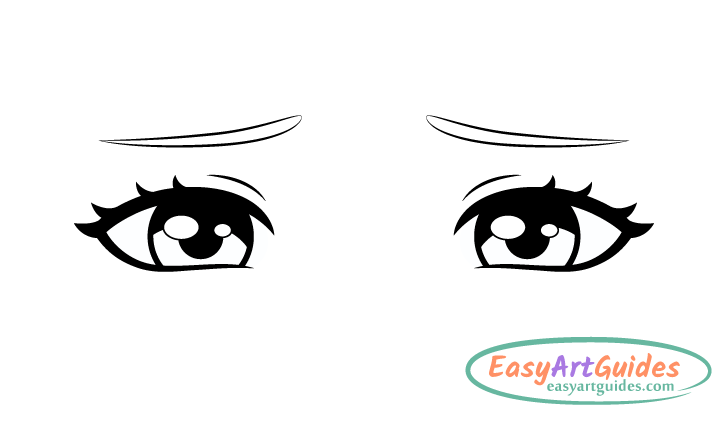
After you have all parts of the “sad eyes” outlined, trace over your drawing with darker lines (pencil or marker) and fill in the eyelashes, pupils and upper ends of the irises with black or dark pencil shading. Also, give the irises thicker outlines.
Step 8 – Color the Eyes
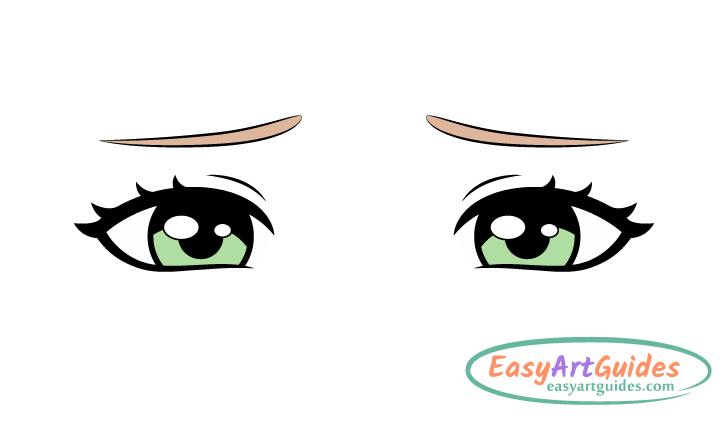
Fill in the irises and eyebrows with the colors of your choice to finish the drawing.
How to Draw a Sly Eye Expression Step by Step

This example is of a sly eye expression, one someone can have when they are plotting something.
Step 1 – Draw the Outlines of the Eyes
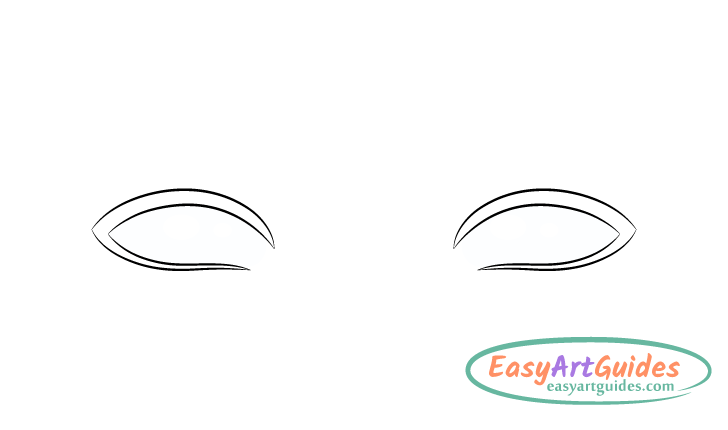
For a sly expression draw the eyes much narrower than normal with the upper eyelids lowered and the lower eyelids raised.
Step 2 – Draw the Irises
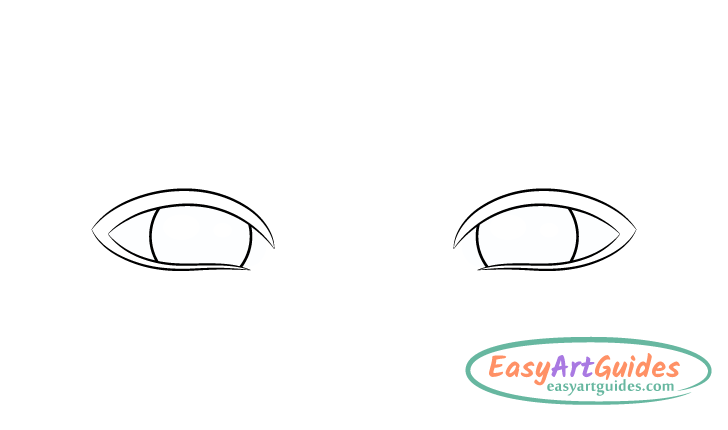
Draw the irises with a good portions of both tier bottoms and tops covered by the eyelids.
Step 3 – Draw the Eyebrows
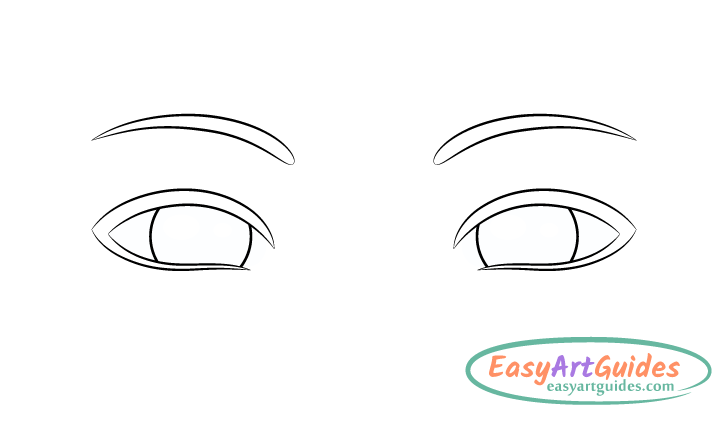
You can draw the eyebrows in pretty much the same way as for a normal expression.
Step 4 – Draw the Pupils
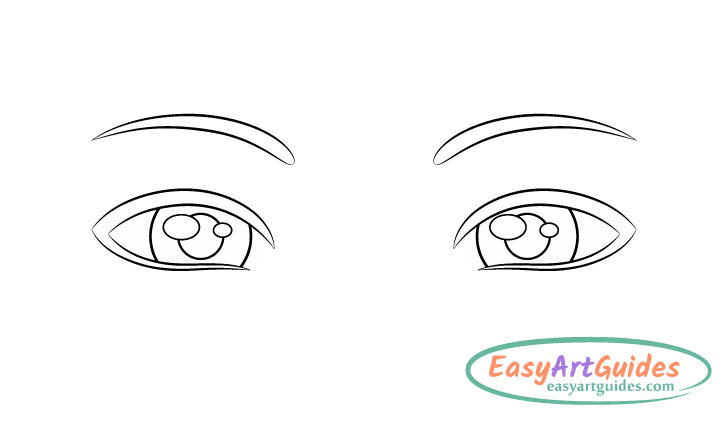
Draw the pupils in the center of the irises with overlapping reflections (same as normal).
Step 5 – Add the Eyelids
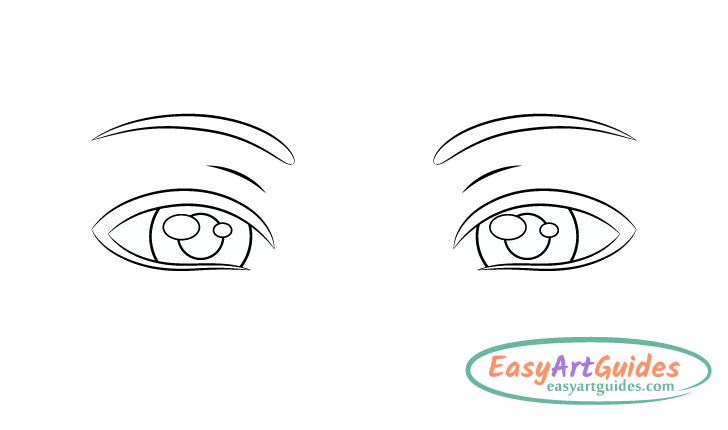
Because the eyes are drawn narrowed there should be bigger gaps between them and the lines that define the upper ends of the eyelids. Draw the upper ends of the eyelids as a pair of small curves near the inner corners of each eye.
Step 6 – Add Hints of Individual Lashes
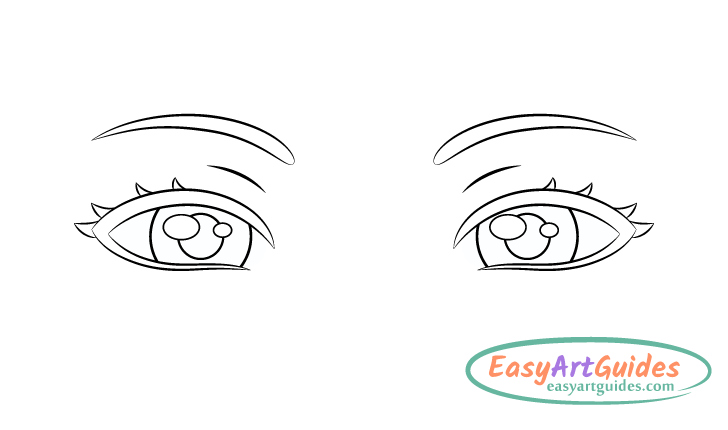
Draw hints of individual lashes around the upper outer corners of the eyes. Because the eyes are narrowed you can place the lashes slightly closer together.
Step 7 – Add Shading
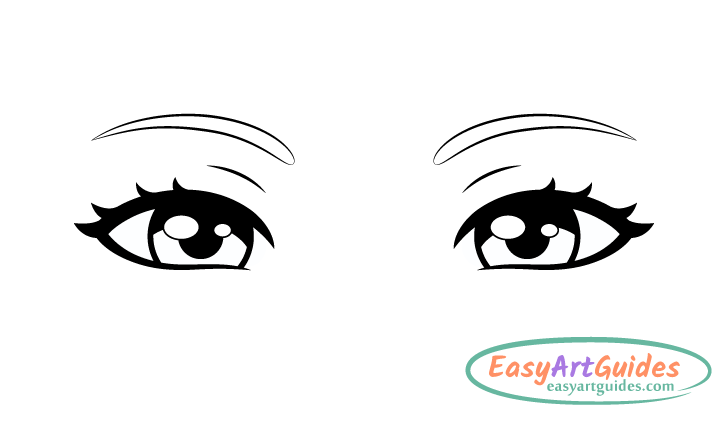
Once you have all parts of the “sly eyes” outlined, trace over your drawing with darker pencil lines or a thin black marker. Afterwards fill in the eyelashes, pupils and upper parts of the irises with black or dark pencil shading and give the irises darker outlines.
Step 8 – Add Color
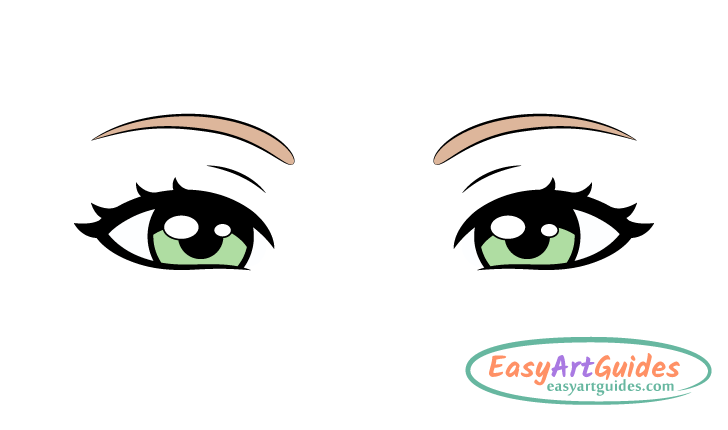
Finish the drawing by adding some color to the irises and eyebrows.
How to Draw a Thinking Eye Expression Step by Step

This example can be used for showing a thinking, puzzled or daydreaming expression of the eyes.
Step 1 – Draw the Outlines of the Eyes

For eyes that make it look like a person is thinking about something draw their outlines wider than normal. However, don’t make them quite as wide as you would for a scared or a surprised one.
Step 2 – Draw the Irises
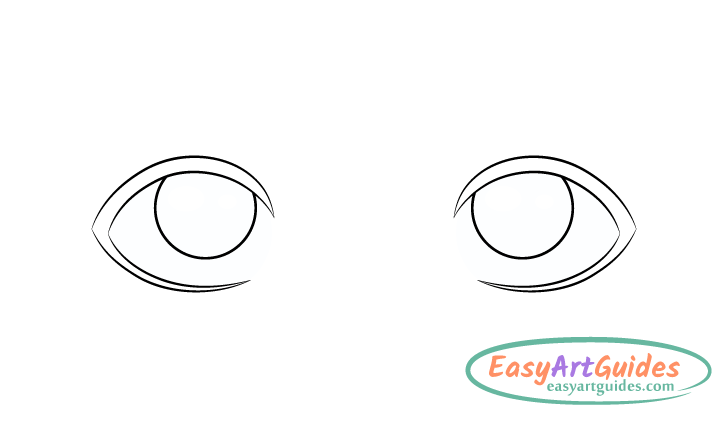
Draw the eyes rolled up by positioning the irises higher up and slightly closer together than normal. A good portion of their upper ends should be covered by the eyelids.
Step 3 – Draw the Eyebrows
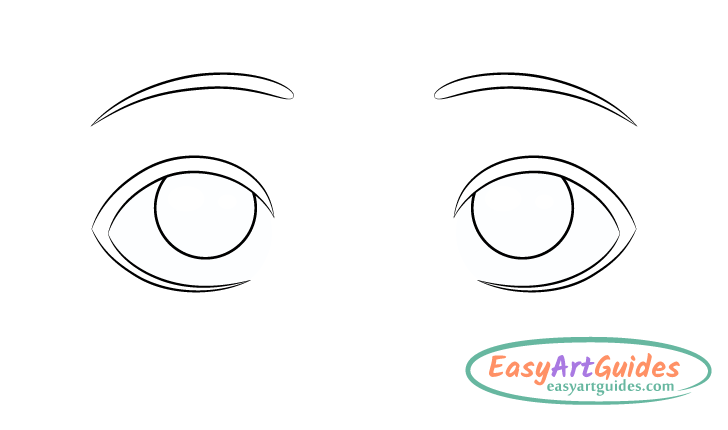
To emphasize a thinking/puzzled expression draw the eyebrows raised (their inner ends in particular).
Step 4 – Draw the Pupils
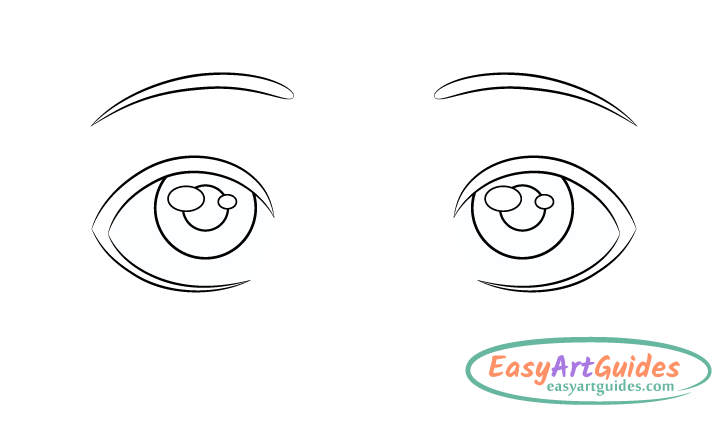
Draw the pupils and reflections same as those for the eyes in their normal state.
Step 5 – Add the Eyelids
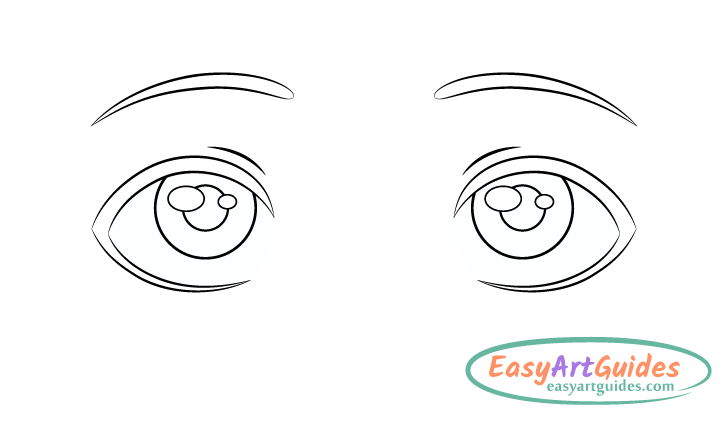
Above the eyes draw a pair of curves to show the upper end of the eyelids. Because the eyes are open wider than normal position these closer to their outlines.
Step 6 – Add Hints of Individual Lashes
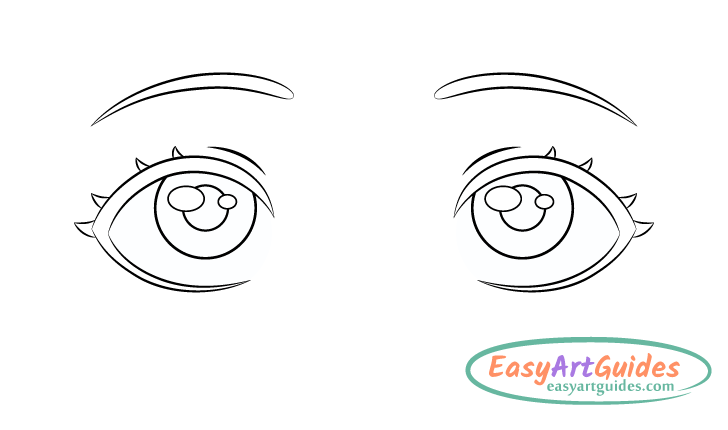
Draw some individual lashes around the upper outer corners of the eyes. Again, because the eyes are wide open and the eyelids are somewhat stretched out you can space these out slightly farther apart than for eyes in their relaxed state.
Step 7 – Add Shading
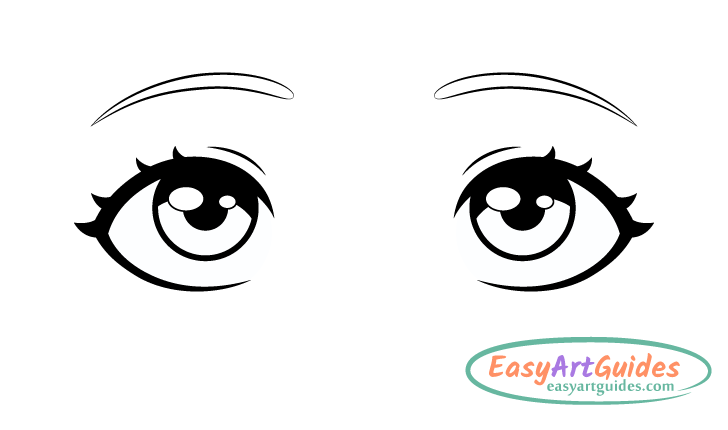
When you have all parts of the “thinking eyes” drawn out, trace over your lines with a thin black marker or darken them with the pencil. Next, fill in the eyelashes, pupils and upper parts of the irises with black. Also, give the irises thicker outlines.
Step 8 – Color the Eyes
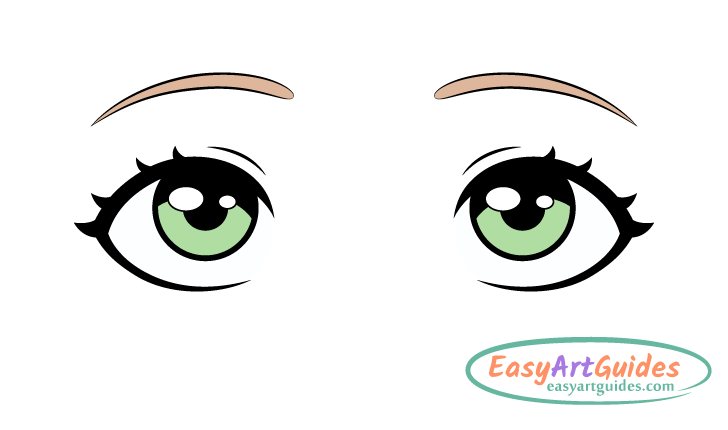
Finish the “thinking eyes” drawing by coloring the irises and eyebrows.
How to Draw an Angry Eye Expression Step by Step
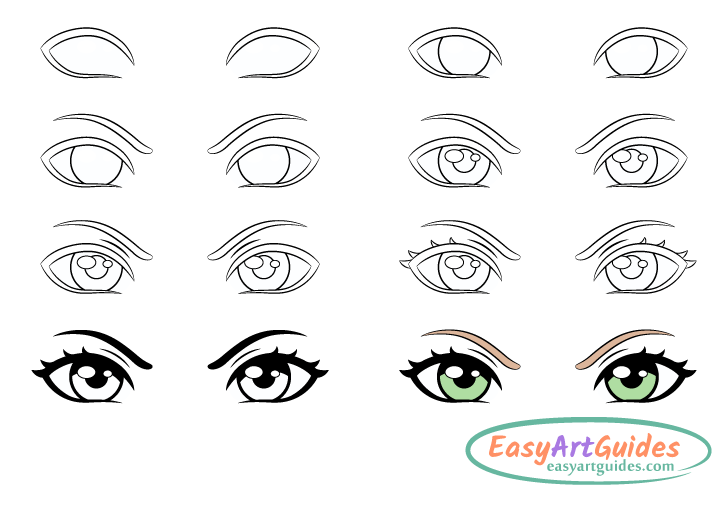
This example can be used to show an angry or a determined eye expression.
Step 1 – Draw the Outlines of the Eyes
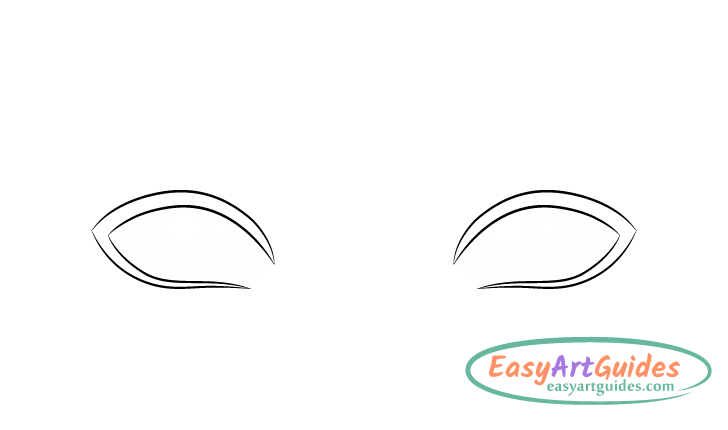
For an angry expression draw the eyes narrower with their inner ends lowered.
Step 2 – Draw the Irises
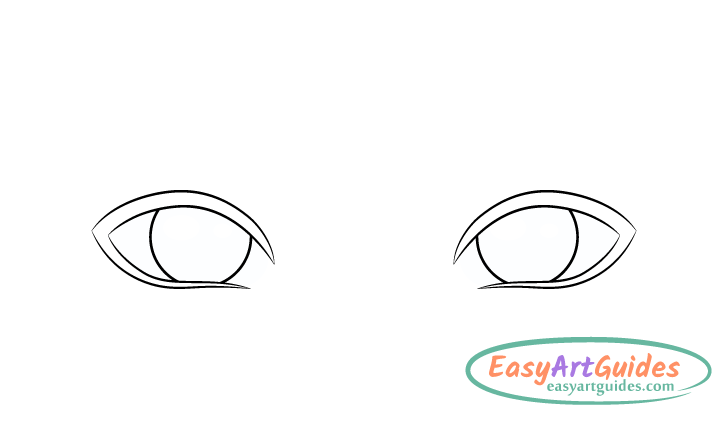
Draw the irises with good portions of their tops and bottoms covered by the eyelids (more of the tops).
Step 3 – Draw the Eyebrows
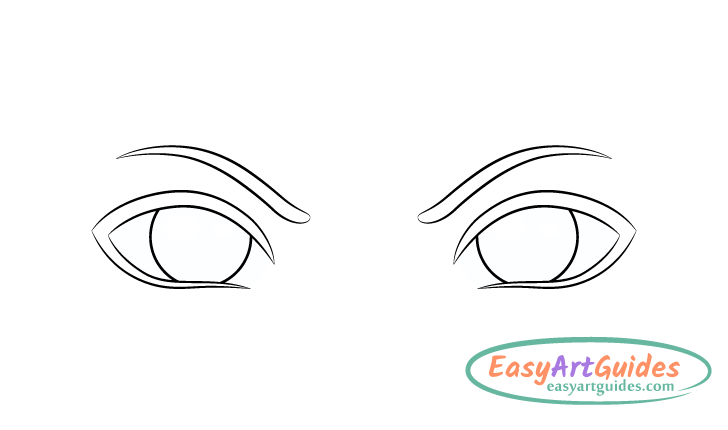
The eyebrows are particularly important for this expression. To show an angry look draw the eyebrows lower down, closer together and with their inner ends lowered even further and curved downwards.
Step 4 – Draw the Pupils
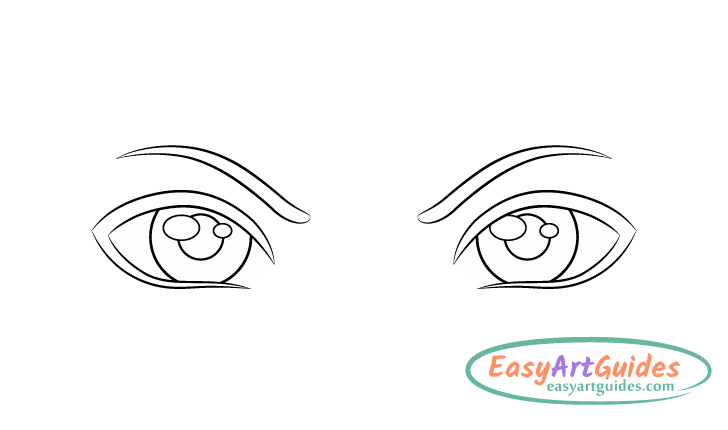
Inside each eye draw a pupil overlapped by a pair of reflections (same as normal).
Step 5 – Add the Eyelids
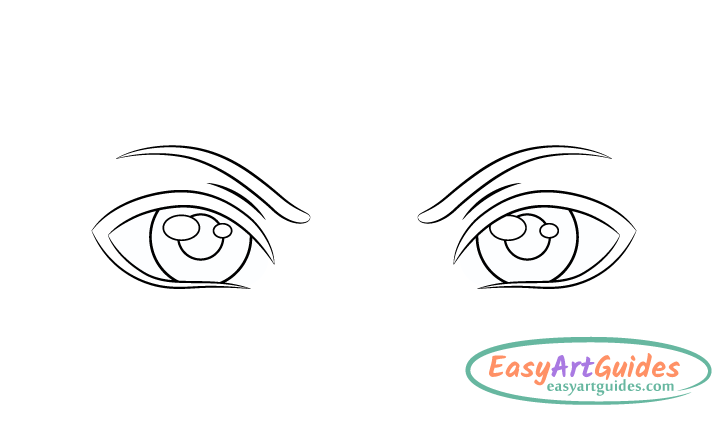
Draw a pair of curves above the eyes to show the upper ends of the eyelids. Normally, when the eyes are narrowed these would be higher up but in this case they are being pushed down by the lowered eyebrows. For this reason you can position them slightly closer to the outlines of the eyes than you would for a normal expression.
Step 6 – Add Hints of Individual Lashes
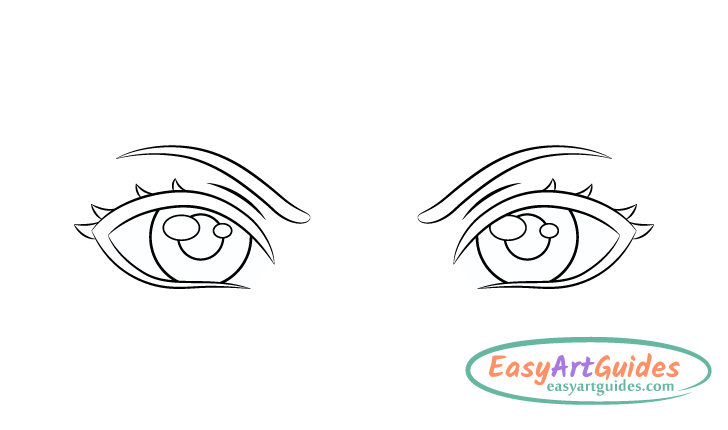
Around the outer corners of each eye draw some hints of individual lashes. Because the eyelids are somewhat squeezed in this expression you can draw the lashes slightly closer together than normal.
Step 7 – Add Shading
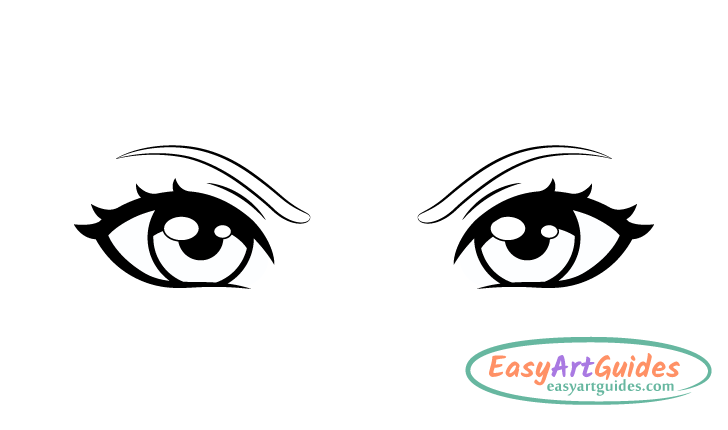
Once you have all parts of the angry eye expression drawn out trace over your drawing with darker lines (use pencil or a thin black marker). Afterwards fill in the eyelashes, pupils and upper parts of the irises with black or dark pencil shading. Also, give the irises thicker outlines.
Step 8 – Color the Eyes
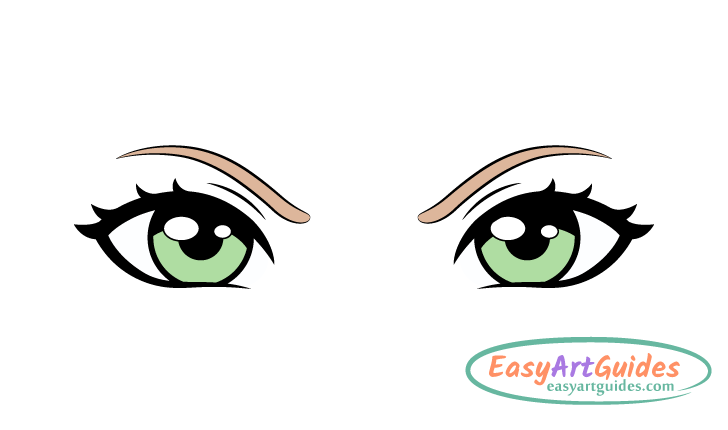
Finally, add some color to the irises and eyebrows to finish the drawing.
Conclusion
Due to it showing how to draw several different eye expressions with a step by step breakdown for each of them this guide is quite long. To reduce the amount of repetitive instructions the first example provides the most detailed breakdown of the drawing process with the rest focusing more on how the different parts of the eyes shift as compared to it. For this reason it was recommended at that start of the tutorial that you read the instruction for drawing the normal eye expression even if you wish to draw one of the other examples. If you’ve missed it it’s recommended that you go back and see those instructions. If you have gone over them than hopefully this guide helped you get a better understanding of how to draw different kinds of eye expressions.
Also, please note that although the eyes in this tutorial are drawn in a cartoon style, you can still apply most of the provided tips even when drawing eye expression with a more realistic look.
If you’ve like this guide you might also wish to try the following:



